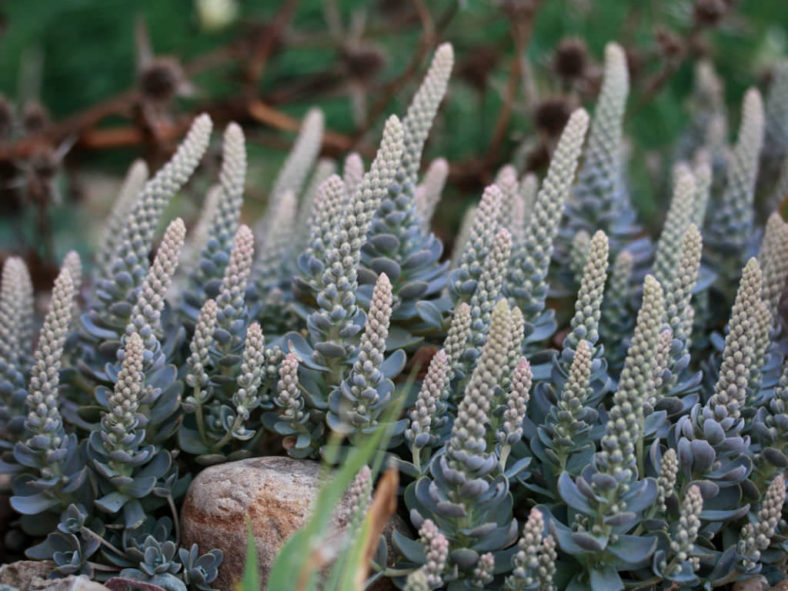Orostachys is a genus of monocarpic rosette-forming succulents similar to Echeveria and Sempervivum. These succulents are fast-growing plants with grey or green leaves forming small rosettes. The small bell-shaped flowers are usually white or pink and grow densely packed on conical inflorescences, up to 12 inches (30 cm) tall and quite amazing to see. The plants natively grow in Korea, China, Mongolia, and northern Japan.
Some species show fantastic symmetry of the rosette. Orostachys spinosa is of note, as the leaf pattern follows a Fibonacci sequence.
Growing Conditions
As with most similar genera of Crassulaceae, Orostachys survive in fairly poor soil so long as it is well-draining. The species are very cold-hardy and can withstand temperatures below -30° F (-34° C). Allow soil to dry to the touch between waterings and avoid getting water on the rosettes. Orostachys actively grow in spring and summer. They require some bright light and do not tolerate high humidity well.

Propagation
Orostachys plants self-propagate through offshoots and given time. Thus, one plant will form a dense mat of many. Propagation is primarily through offset separation.
To separate an offset, remove soil from the offset's base to find the stolon (thick stem that attaches the offset to the mother plant). It is best to use an offset that has already established its own roots. Cut the stolon close to the offset. Place the offset into a small pot with well-draining soil. Do not water until new growth is noted.
General Care
Pruning: In general, these are excellent plants to forget about. Leave them in a bright, sunny location and water very sparingly. Water in the morning to prevent water from remaining on the leaves during the night. Remove any dead leaves from rosettes, as they invite rot and insects. When a rosette has flowered, it will die shortly.
Problems: In the event of an unhealthy plant, the first thing to examine is your watering habits. The most common problem is root rot due to overwatering. If the soil is too wet, do not hope it will safely dry out if you do not water it for a while. Replace the soil immediately.
One of the most common pests to houseplants is mealybugs, and your Orostachys may fall prey to these pests. However, the mealybugs will attack the roots more often than not due to the tightly packed leaves. This makes them far less visible than mealybugs, which attack leaf-stem junctions. The symptoms of a root mealybug infestation are slowed or stopped growth (though in winter, this is a normal sign of dormancy). If this occurs without apparent cause, remove the plant from the pot and examine the roots. A white cottony substance on the roots and soil is a sure sign of mealybug infestation. Remove all soil and wash the roots gently. Remove any damaged roots with a sharp, sterile knife or scissors. Let them dry very thoroughly before replanting.
Source: everything2.com
Links
- Back to genus Orostachys
- Succupedia: Browse succulents by Scientific Name, Common Name, Genus, Family, USDA Hardiness Zone, Origin, or cacti by Genus